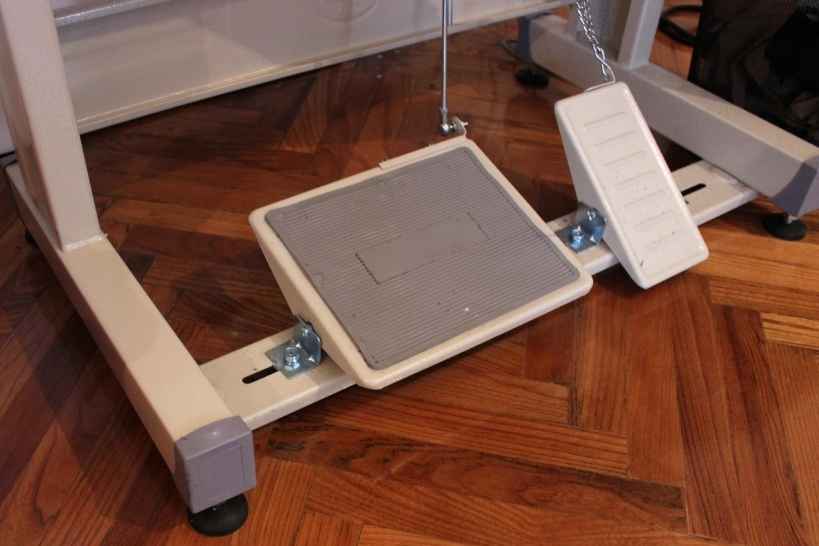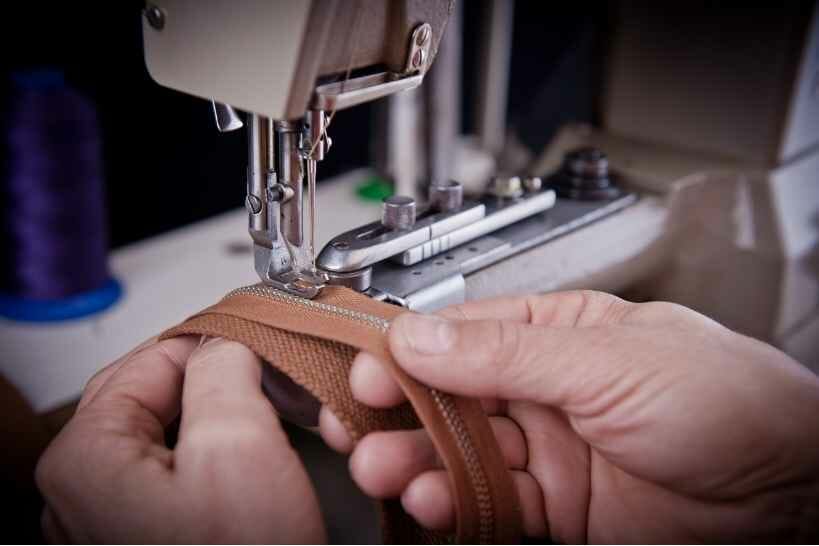Our Ultimate Guide To Sewing Machine Foot Pedals & How They Work
One of the most important parts of a sewing machine is the foot pedal, this pedal allows you to have full control over your sewing machine as you guide the fabric through with your hands to keep it steady.

Sewing machine foot pedals are specifically made for each type of sewing machine you choose, they work by pressure, the more you press down, the faster the machine will sew, the lighter your pressing then the slower it will sew.
We’ve composed a guide below which will cover more about how these foot pedals work, their benefits and how to troubleshoot any issues with one.
What Is A Sewing Machine Foot Pedal?
Before we get into all the parts and how they work on a foot pedal, let’s discuss more what this pedal is and why it’s important on a sewing machine.
As we mentioned above, the main function of foot pedals on sewing machine models is so as they give you better control and accuracy over your stitching. Pressing lightly or hard determines the speed of your machine.
When talking about two-foot models on standing up sewing machines, these work together as left and right foot pedals.
- Left pedal – This helps to engage the clutch and control speed in the machine.
- Right pedal – The right pedal disengages the clutch and sends pressure through the control valve to open the presser foot, this sewing foot pedal is connected to the brake too.
- Pivot motion control – This pivot motion control arm is activated through the rotation of both foot pedals, anti-clockwise helps to move the speed while clockwise there is a brake in your sewing machine’s function.
How Does A Sewing Machine Foot Pedal Work?
Now we know the basics of what sewing machine pedals are and how they give you control over sewing machine stitches we can dive into deeper detail about their parts.
- The Rheostat – This is the part of sewing machine pedals that controls the resistance of the sewing machine by controlling motor output, the resistor plates are also responsible for the smooth movement of your machine, if not working properly it can cause jerky movements when working. The more you press your foot pedal, the higher the compression of the resistor plates, therefore the faster the sewing machine.
- Footrest – Having a footrest stops you from lifting your feet too high during sewing and keeps you comfortable while operating the machine.
- Capacitor – This is where the battery for sewing machine power is since it stores electricity and helps keep the sewing time going during power shutdowns.
- Connector – The connector is the connector hub for everything in your foot pedal, without it, your power sources would not work. Better quality connectors avoid issues such as electric shock.
- Assembly – To get your sewing machine activated, the assembly is an important part of your pedal, it’s connected with a rod to your machine’s control arm which is what controls the speed of the machine.
- Mechanical parts – These are the basic parts of your foot pedal like the plastic parts and joints, these can be maintained with oil for running smoothly in the long run.
What Are The Benefits Of A Foot Pedal On Your Sewing Machine?
For different types of sewing machine models, you will need the corresponding foot pedal for sewing performance, but is sewing machine foot control worth it?
We’ve listed a few benefits of using a foot pedal on your sewing machine below.
- It’s relaxing – Believe it or not, using a foot pedal can be very relaxing thanks to the rhythm it gives from the foot pressure.
- Helps you to control speed – Having a foot pedal gives you the best control with slow pressure or fast pressure translating to speed.
- Allows you to run the machine without power – Pedals of sewing machines will allow you to store power even when you have no electricity.

Can I Use My Sewing Machine Without A Foot Pedal?
Some sewing machines do come without foot pedals and work perfectly fine, instead, they might have a stop or start button or knee pedals. It should be noted that a pedal is important for the perfect sewing experience since it gives you better stability and control.
In fact, not all sewing machines have foot pedals, for example, computerized sewing machines often do not have foot pedals since the control of speed is done internally, meaning they run smoother than mechanical sewing machines.
Why Your Sewing Machine Foot Pedal Is Not Working
If you’ve added a pedal to the sewing machine and you’re running into issues, there are plenty of ways to troubleshoot and find the solution as to why it’s not working.
We’ve listed a few below.
There Is Burning In The Foot Pedal
If you have a burning smell coming from your foot pedal this might be why your pedal has stopped working.
A burnout on your foot pedal could happen from leaving your machine plugged in or an electrical shock of some kind. In this case, you might have to have a foot pedal repair or replace it.
Your Sewing Speed Is Too Slow
Sewing very slowly on your machine can cause the current to cut out since the rheostat is responsible for it. A slow sewing speed means the machine and foot heat up making it difficult time to sew.
You can fix these in two ways, either give the machine some time to cool down or try to sew at a constant speed.
Resting Your Foot On The Pedal
Resting your foot on the pedal of your machine can cause it to turn on due to the foot pressure, this causes a temperature increase in your pedal, causing it not to work.
It’s Blocked
A foot pedal that is full of lint or fabric could just be simply blocked from working properly which is why it cannot function, in this case, it would be best to just clean the foot pedal regularly and oil its parts to prevent further blockages.
Check The Wire
It’s possible that the wire of your foot pedal could be broken, inspect it closely for any frayed edges or damages, if broken you will need to install a new wire or replace the entire thing.
Can Sewing Machine Foot Pedals Be Used Universally?
You might be wondering if you can simply switch your foot pedal out with different sewing machine models?
Unfortunately no, sewing machine feet are not interchangeable between models but might be in between brands, for example, some Singer sewing machine feet might fit on other Singer sewing machines.
Frequently Asked Questions About Sewing Machines & Foot Pedals
What are some other important features of sewing machines?
Other than the foot pedal, some other important features of sewing machines for an efficient sewing experience are; an automatic needle threader, feed-dog adjustment, auto thread tension, free arm, presser feet, stitch selection and top-loading bobbins for ease of use.
Does counter-clockwise pressure on a foot pedal make sewing faster?
Counterclockwise pressure does increase your sewing machine’s stitches speed while clockwise will slow it down via the pivot arm.
How do I open my sewing machine’s foot pedal?
To open up your sewing machine’s foot pedal you will first need to take off the sliding cover and then undo any screw on the pedal. If your pedal is reluctant to open then simply use some oil to lubricate and open it up.
Can I use my computerised sewing machine without a foot pedal?
Yes, there is no reason as to why you need to have a foot pedal on these types of sewing machines since the control of the sewing machine is done internally by the computerised system inside, allowing you to control the speed there.
How can I test my sewing machine’s foot pedal?
To test your sewing machine’s foot pedal, grab a circuit tester and set it for testing electricity in ohms. Put the probes onto the wires of the pedal then apply some pressure onto the pedal, check for a positive or negative reading to see if your pedal is working.

Why am I getting sewing machine issues with my foot pedal?
Your sewing machine’s foot pedal might likely have become stuck, your first port of call before opening it up is to lubricate it slightly with some oil and brush any debris out of the pedal.
What does the movable plate do on a foot pedal?
The movable plate is responsible for the pressing of the foot pedal, allowing you to press in clockwise or anti-clockwise motions when sewing functioning as an electronic speed controller, without the plate there would be no change in pressure or speed when sewing.
Final Words
Overall, a sewing machine foot pedal is one of the most important parts of your sewing machine for control over the speed of your stitch, without it, you might find it harder to get a good quality stitch.
We recommend using your foot pedal a few times as a beginner on some practice stitches to get used to the control and pressure it needs while sewing, if your foot pedal ever stops working while sewing simply opens it up, a connector could be broken or it might need cleaning.